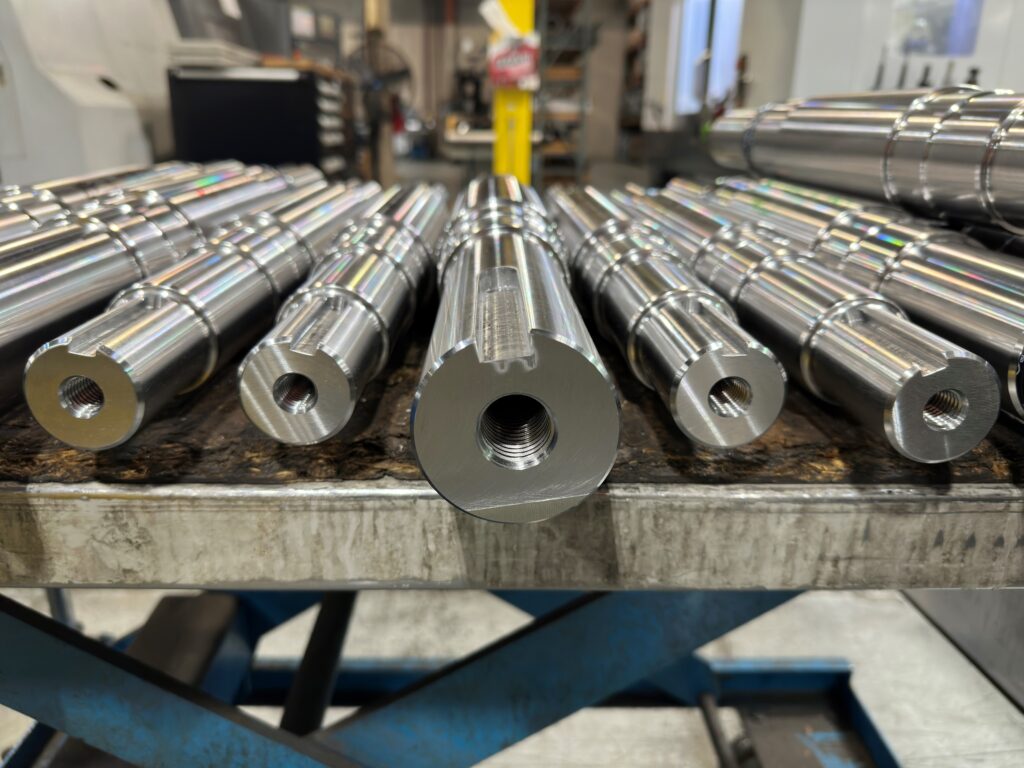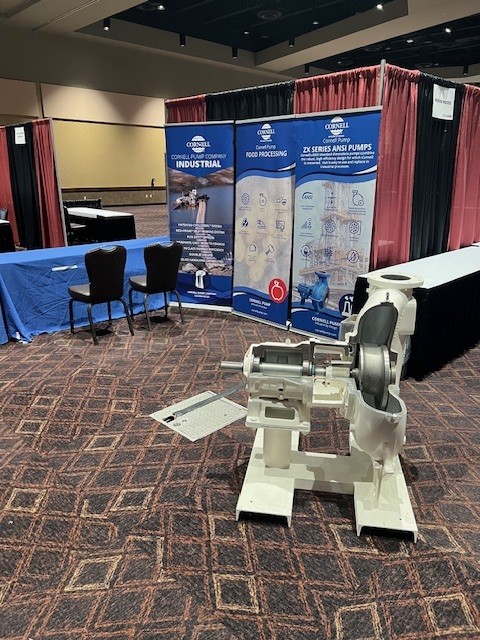Here’s the process we use to create a shaft:
Step 1: Raw Material Preparation
It all starts with high-strength bar stock, cut to length based on the shaft model and pump specifications. Cornell uses only premium materials to withstand the rigors of industrial, agricultural, and municipal pumping applications.
Step 2: Turning on CNC Lathe
The shaft blank is loaded into a state-of-the-art CNC lathe. Here, it is precision-machined to exacting tolerances. Grooves, shoulders, diameters, and threads are cut with accuracy down to the thousandth of an inch. This step ensures that the shaft aligns perfectly with bearings, sleeves, impellers, and seals.
Step 3: Milling and Secondary Machining
After initial turning, the shaft moves to a milling center for additional operations such as keyway cutting or cross-drilling. Any design-specific features required by Cornell’s pump series (like the robust Redi-Prime or cutter pumps) are added at this stage.
Step 4: Quality Control & Measurement
Before proceeding, every shaft undergoes a rigorous inspection. Technicians use digital micrometers, calipers, and gauges to verify tolerances. This attention to detail prevents vibration, misalignment, or premature wear once the shaft is installed.
Step 5: Balancing
Some shafts, especially in larger or high-speed pumps, are dynamically balanced to eliminate vibration and ensure smooth operation. This process involves fine-tuning the shaft’s mass distribution using specialized balancing equipment.
Step 6: Cleaning and Final Prep
Before shipping to assembly, the shaft is deburred, cleaned, and tagged. It’s now ready to be paired with Cornell’s premium impellers, seals, and bearings—built into pumps known worldwide for reliability and performance.
Craftsmanship Behind Every Rotation
By keeping shaft production in-house, Cornell ensures greater control over quality, lead time, and customization. The result? A pump shaft that can handle the toughest applications—whether in slurry, irrigation, rental, industrial, or wastewater systems.




